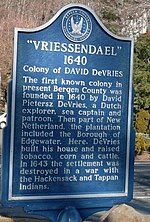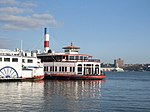Palisades Amusement Park
1898 establishments in New Jersey1971 disestablishments in New JerseyAmusement parks closed in 1971Amusement parks in New JerseyAmusement parks opened in 1898 ... and 7 more
Buildings and structures in Bergen County, New JerseyCliffside Park, New JerseyClosed amusement parksDefunct amusement parks in New JerseyNew Jersey streetcar linesUse American English from August 2022Use mdy dates from August 2022

Palisades Amusement Park was a 38-acre amusement park located in Bergen County, New Jersey, across the Hudson River from New York City. It was located atop the New Jersey Palisades lying partly in Cliffside Park and partly in Fort Lee. The park operated from 1898 until 1971, remaining one of the most visited amusement parks in the country until its closure, after which a high-rise luxury apartment complex was built on its site.
Excerpt from the Wikipedia article Palisades Amusement Park (License: CC BY-SA 3.0, Authors, Images).Palisades Amusement Park
Palisadium Drive,
Geographical coordinates (GPS) Address Nearby Places Show on map
Geographical coordinates (GPS)
| Latitude | Longitude |
|---|---|
| N 40.8281 ° | E -73.9778 ° |
Address
Palisadium Drive
Palisadium Drive
07020
New Jersey, United States
Open on Google Maps








